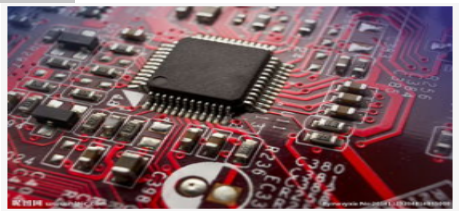Is there any strategy to improve electromagnetic compatibility design?
Electromagnetic compatibility design is a topic that everyone has been paying attention to, but in today's increasingly complex electromagnetic environment, EMC design is still very important. Here are some of the electromagnetic compatibility design strategies summarized by professionals. Perhaps this is the standard for your circuit design practice. Let us share these design experiences together, strive to improve electromagnetic compatibility, and build a “harmonious” electromagnetic environment!

1. Adopt the correct wiring strategy.
The use of equal traces can reduce the inductance of the wire, but the mutual inductance and distributed capacitance between the wires increase. If the layout allows, it is better to use a well-shaped mesh wiring structure. The specific method is that one side of the printed board is laterally routed, and the other side is longitudinally routed. Metallized holes are then connected at the intersection holes.
2. In order to avoid the electromagnetic radiation generated when the high-frequency signal passes through the printed wiring, the following points should be noted when wiring the printed circuit board:
(1) Minimize the discontinuity of the printed conductor. For example, the width of the conductor should not be abrupt, and the corner of the conductor should be greater than 90 degrees to prohibit the loop.
(2) The clock signal lead is most likely to cause electromagnetic radiation interference. When routing, it should be close to the ground loop, and the driver should be next to the connector.
(3) The bus driver should be close to the bus it is intended to drive. For leads that leave the printed circuit board, the drive should be next to the connector.
(4) The wiring of the data bus should sandwich a signal ground between every two signal lines. It is best to place the ground loop next to the least important address leads, as the latter often carry high frequency currents.
(5) In order to suppress the crosstalk between the printed circuit board wires, the long distance equalization should be avoided when designing the wiring, and the distance between the wires and the wires should be as far as possible. The signal wires and ground wires and power wires should be as far as possible. Do not cross. A grounded trace is placed between some signal lines that are very sensitive to interference, which effectively suppresses crosstalk.
3, choose a reasonable wire width
Since the transient interference generated by the transient current on the printed wiring is mainly caused by the inductance component of the printed conductor, the inductance of the printed conductor should be minimized. The inductance of a printed conductor is proportional to its length and inversely proportional to its width, so short and fine conductors are advantageous for suppressing interference. Signal lines for clock leads, row drivers, or bus drivers often carry large transient currents, and the printed conductors should be as short as possible. For the discrete component circuit, when the width of the printed conductor is about 1.5mm, the requirement can be fully satisfied; for the integrated circuit, the width of the printed conductor can be selected between 0.2 and 1.0mm.
4. Differential signal line routing strategy is adopted in the circuit board design process.
Differential signal pairs that are placed very close together are also tightly coupled to each other. This mutual coupling reduces EMI emissions. Usually (and of course some exceptions) differential signals are also high-speed signals, so high-speed design rules are also generally applicable. This is especially true for the routing of differential signals, especially when designing signal lines for transmission lines.
This means that we must carefully design the routing of the signal lines to ensure that the characteristic impedance of the signal lines is continuous throughout the signal lines and remains constant. During the placement and routing of differential pairs, we want the two PCB lines in the differential pair to be exactly the same. This means that in practical applications, every effort should be made to ensure that the PCB lines in the differential pairs have exactly the same impedance and that the length of the wiring is exactly the same. Differential PCB lines are usually always wired in pairs, and the distance between them remains constant at any position along the direction of the pair. In general, the layout of differential pairs is always as close as possible.

